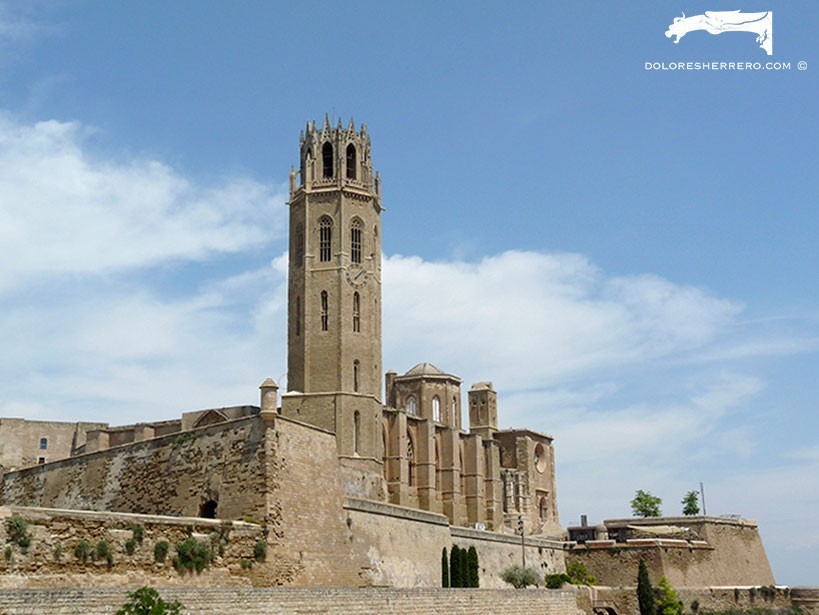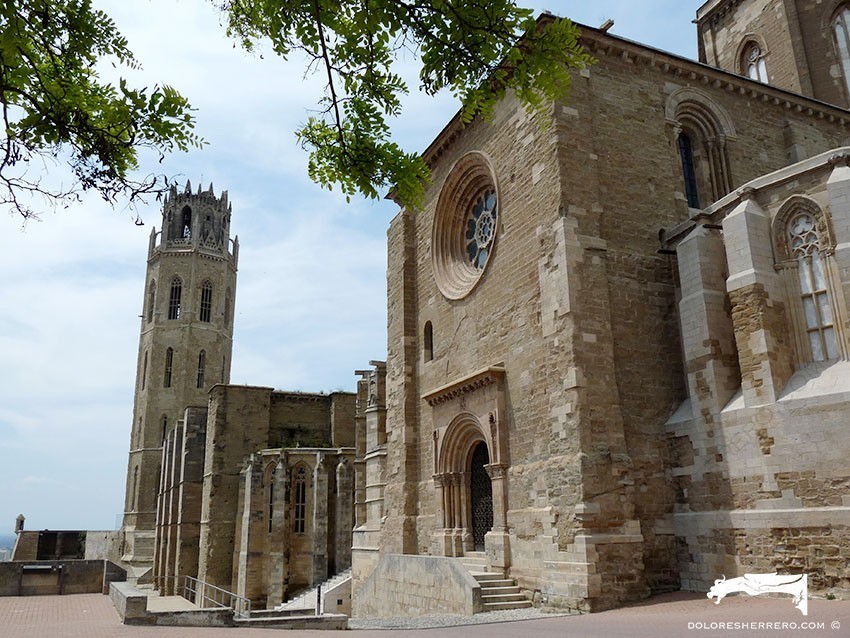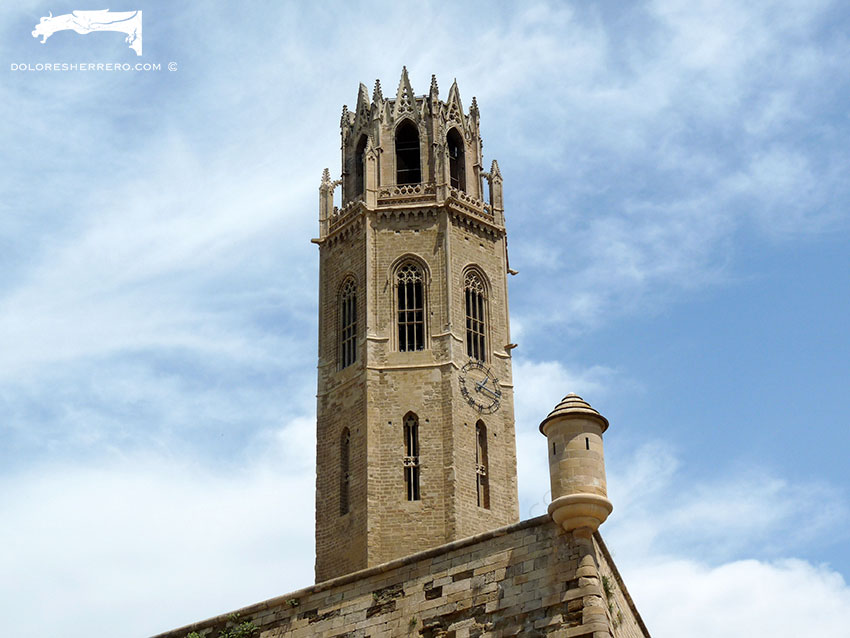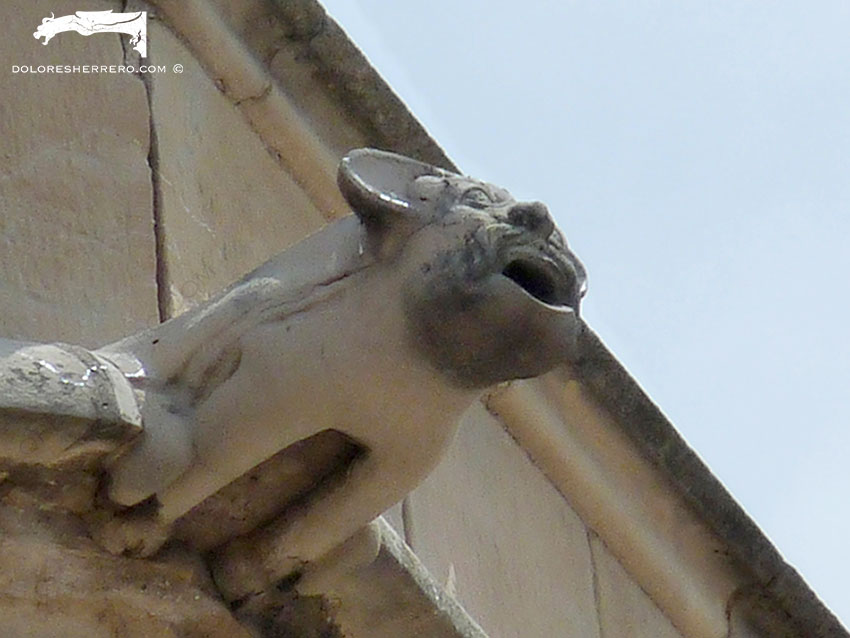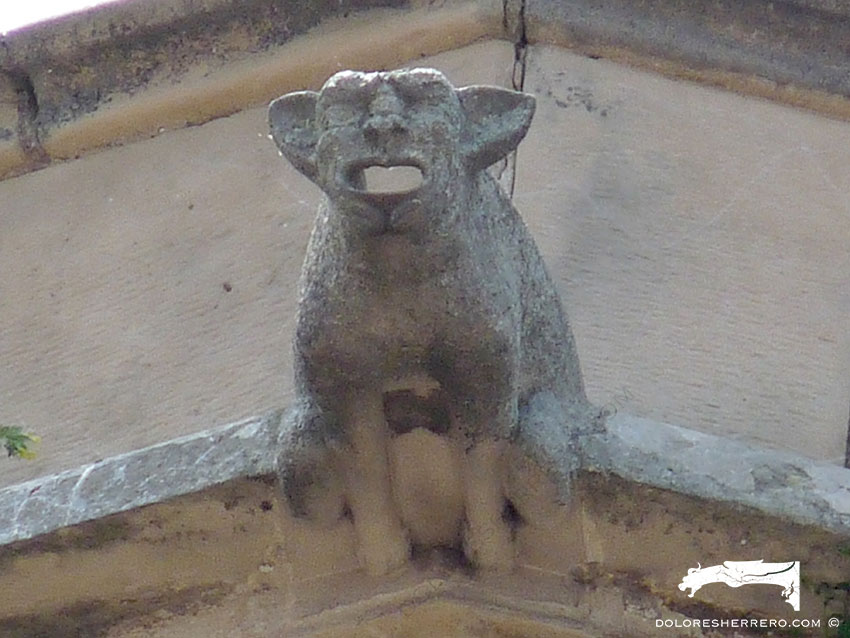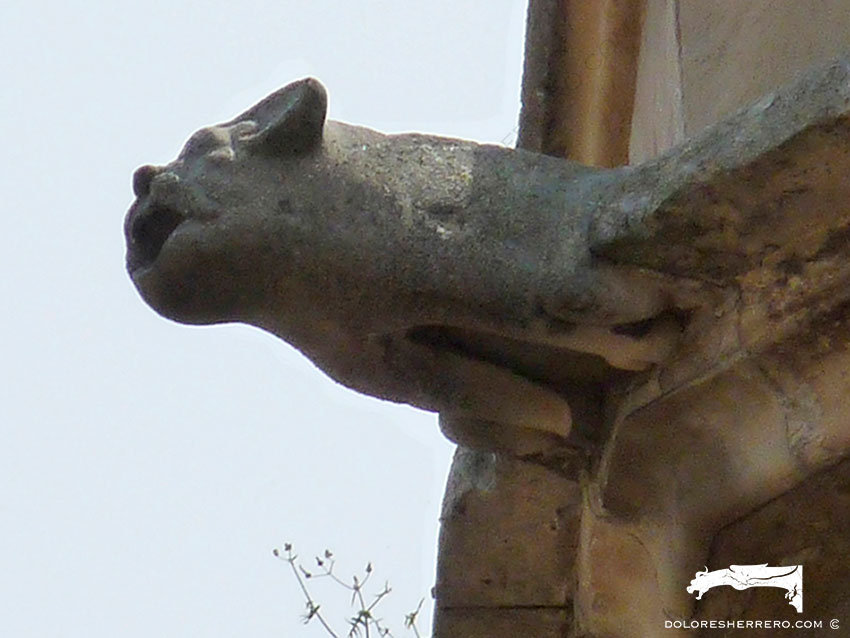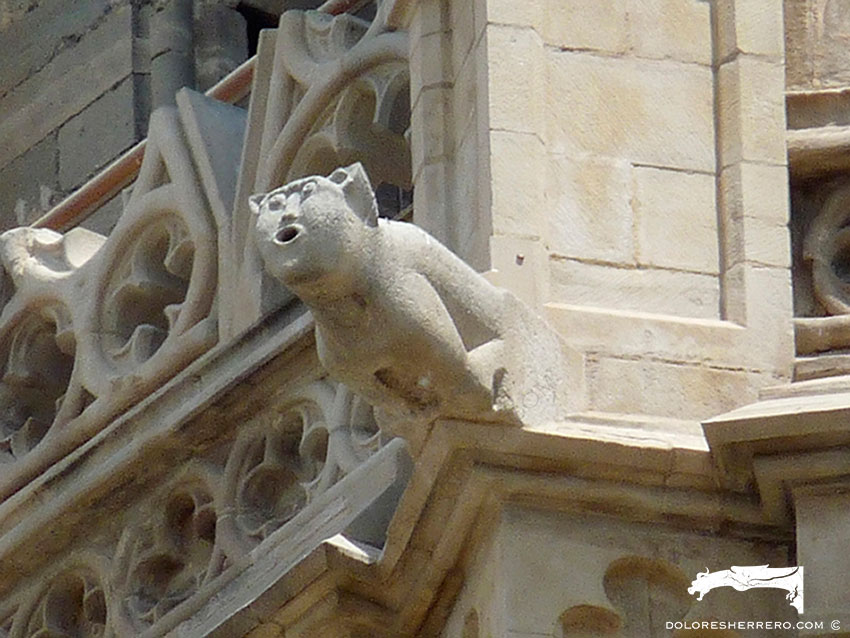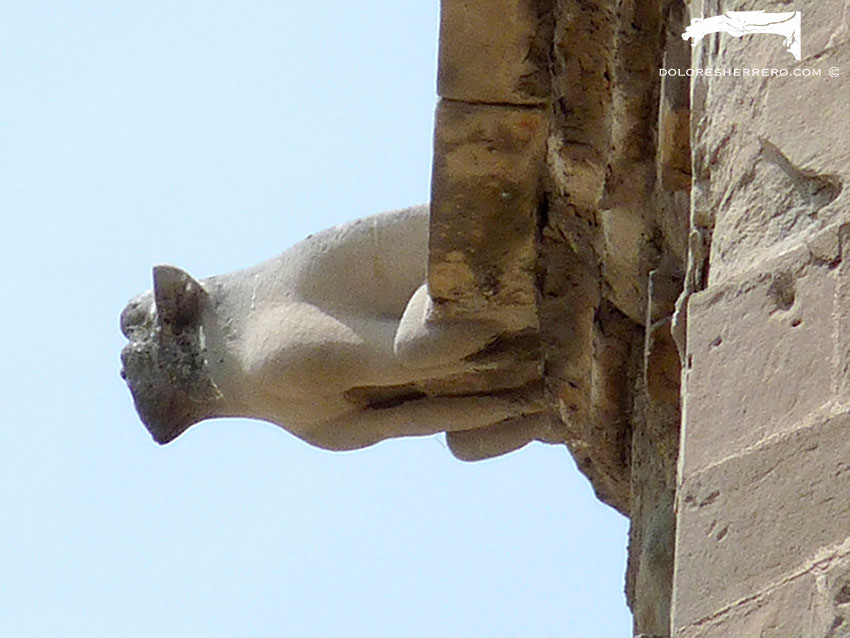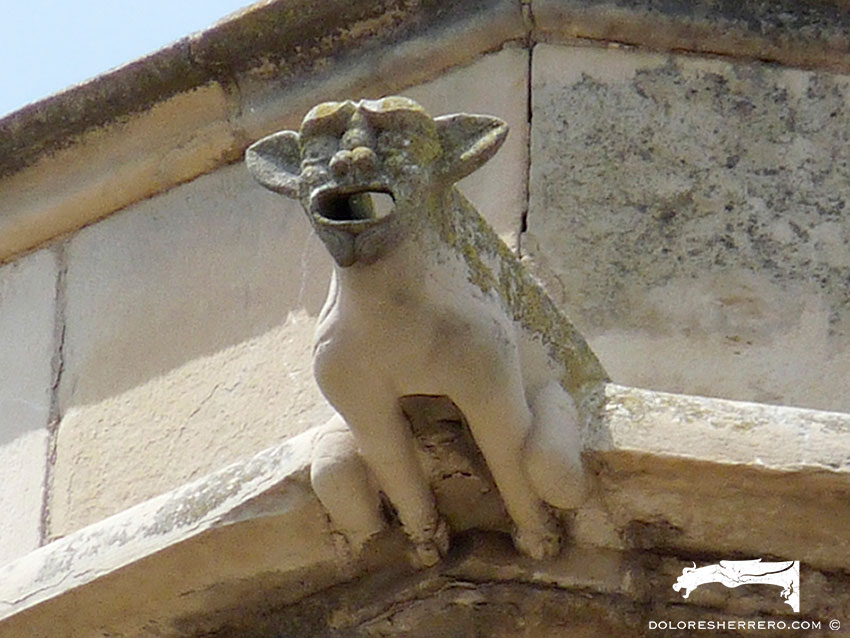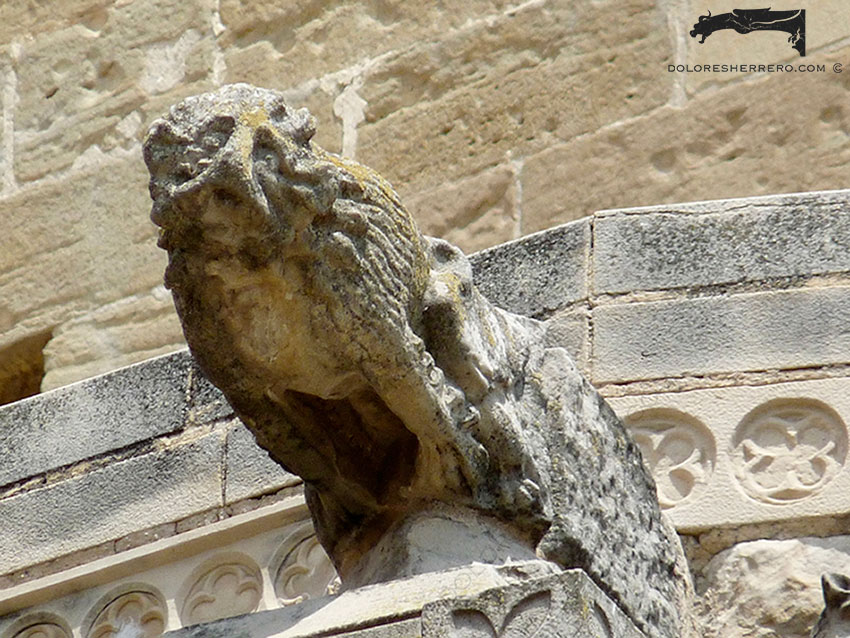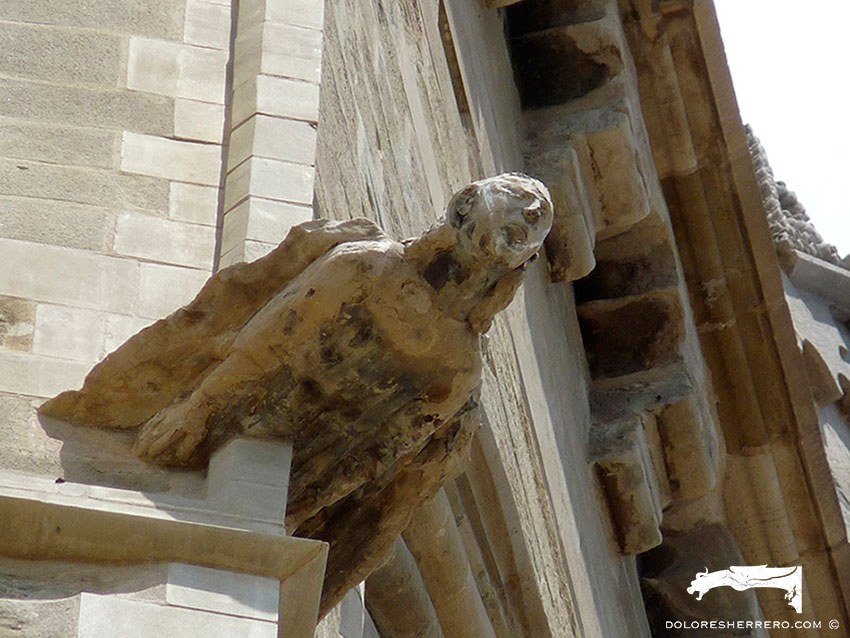On our last trip to Girona, where we enjoyed a beautiful rainy day and were able to watch the water pouring out of the gargoyles on the cathedral, we embarked on a study and compilation of gargoyles in Catalonia (Spain).
Today’s post is dedicated to the gargoyles of Lleida. On the hill known as the Turó de Lleida stands the magnificent old cathedral of Seu Vella, one of the city’s most beautiful buildings. The foundation stone was laid in 1203 and building work continued between the 13th and 15th centuries.
The bell tower, where practically all the cathedral’s gargoyles are to be found, was started in the 14th century and completed in the 15th century.
Gargoyles
The typology is not very varied, however they are peculiar figures.
You can see figures of dogs with similar features, such as flattened noses or large fan-shaped or protruding ears.
There’s also a lion, you can make out the mane, although the face has some unusual features that make it a very original gargoyle.
We saw a human figure too, apparently an angel with large wings and hair. This gargoyle is quite deteriorated, but it’s still a superb image.
There are other headless gargoyles and some are so damaged that it’s impossible to recognise what they are. But, as always, it’s interesting to discover, look at and admire the Spanish gargoyles across the country.
- Dog
- Dog
- Dog
- Dog
- Dog
- Dog
- Dog
- Dog
- Lion
- Angel
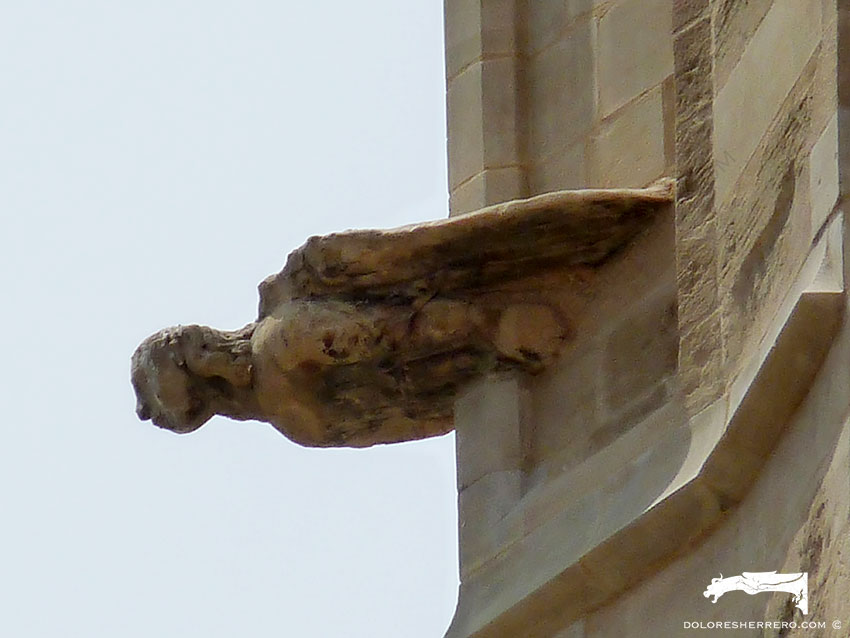
Angel
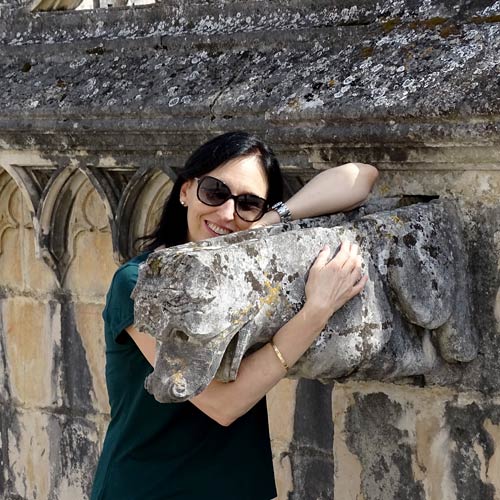
Doctor of Art History and researcher specializing in the study of gargoyles.
I am Dolores Herrero Ferrio, and my thesis, “An Approach to the Study of Gargoyles of Gothic Cathedrals in Castilla and León”, is dedicated to the study of these fascinating figures.
If you like gargoyles and art history, you will also enjoy my book, “The Gargoyle and Its Iconography,” a book I have written with great care for those interested in the world of gargoyles.
I have created my own Encyclopedia of Gargoyles, a Gargopedia to share with you, where you will discover all the secrets and wonders of these enigmatic sculptures.
I hope you enjoy this Gargopedia as much as I have enjoyed creating it, and remember that each gargoyle has a story to tell, and here you will discover them all.
